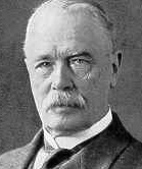This is the oldest of the challenge tests. It describes an elevation-dependency manoeuvre with the application of a tourniquet around the leg. Venous refilling (reflux) can be assessed visually by assessing the time taken for the varicosities to distend. In the classic test the leg is first elevated. An upper-thigh tourniquet is applied to occlude superficial veins and the patient is then asked to stand. If the superficial veins refill quickly then the reflux originates below the tourniquet and comes either through the sapheno-popliteal junction or through perforating veins in the thigh (mid-thigh perforator) in cases with primary varicose veins, or through deep vein incompetence and calf perforators in cases with post-thrombotic syndrome. If they refill quickly after tourniquet release then the source of reflux is above the tourniquet.
CESTMIR RECEK Drainage can be assessed in a similar way using the reversed Trendelenburg test. In this test a tourniquet is placed first around the dependent leg. The time taken for the veins to drain can then be assessed when the leg is subsequently elevated. It tests the varicose drainage pathways though calf perforators and deep veins in the presence of saphenous occlusion. Both tests can be repeated by placing the tourniquet at different levels to detect additional sources of reflux. The Trendelenburg test is a rewarding test but one must gain experience to obtain error free results. In particular, the tourniquet must be applied with adequate force to effectively compress superficial veins. Plethysmographic tests are now available to quantify refilling and drainage thereby avoiding a subjective appreciation of the haemodynamic disturbance. Future research is required in correlating the Trendelenburg tests with plethysmography and in evaluating their place in the management of venous disease.
